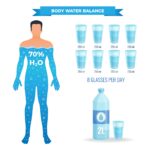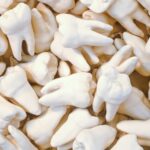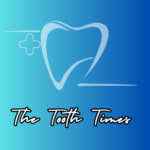incisors ?

Incisors are a type of teeth located at the front of the mouth, and they are characterized by their flat and sharp-edged surfaces. Humans typically have a total of eight incisors – four on the upper jaw (two central incisors and two lateral incisors) and four on the lower jaw (again, two central incisors and two lateral incisors). Incisors are the first set of teeth to appear in the mouth, both in the primary (baby) and permanent (adult) dentitions.
Primary Functions of Incisors:
- Biting and Cutting:
- Incisors are specifically adapted for cutting and biting food. Their sharp edges allow efficient breaking down of food into smaller, more manageable pieces. When you take a bite of an apple or a sandwich, your incisors are the teeth that do the initial work of breaking the food into smaller portions.
- Speech and Articulation:
- The position of incisors in the mouth plays a crucial role in forming various speech sounds. They are essential for pronouncing certain consonant sounds like “s,” “f,” and “th.” When you place your tongue against your upper incisors while speaking, you create specific speech sounds that contribute to clear and precise communication.
- Aesthetic and Facial Appearance:
- Incisors are highly visible when you smile, and their condition and alignment significantly impact your facial aesthetics. Well-maintained and properly aligned incisors contribute to an attractive smile and overall facial harmony.
- Support for Lip Structure:
- The upper incisors play a role in supporting the upper lip, contributing to the overall shape and appearance of the upper lip and the lower part of the face.
- Guiding Occlusion:
- Incisors play a role in determining the way the upper and lower teeth come together when you bite down, which is known as occlusion. They help establish the initial contact between the upper and lower teeth during jaw movements.
Lets see all the types of incisors in all different aspects.
Maxillary central incisors

1. Labial (Front) Surface:
- The labial surface of a maxillary central incisor is the part of the tooth that is visible when you look at your smile.
- It has a convex shape, with a slightly curved outline.
- There is a prominent ridge called the labial ridge that runs vertically down the center of the tooth, creating a symmetrical appearance.
- The incisal edge (biting edge) of the tooth is sharp and provides the cutting function.
2. Buccal (Cheek) Surface:
- The buccal surface is the side of the tooth that faces the cheek.
- It has a flatter and smoother surface compared to the labial surface.
- Towards the incisal edge, you’ll find a small depression called the incisal fossa.
- This surface may also show variations in contour due to wear and individual tooth characteristics.
3. Mesial (Towards the Midline) Surface:
- The mesial surface of the maxillary central incisor is the side that faces toward the midline of the dental arch.
- It is usually slightly convex and can be observed to have a gentle curve.
- The mesial contact point is where the central incisor touches the neighboring lateral incisor, contributing to the alignment of the teeth.
4. Distal (Away from the Midline) Surface:
- The distal surface is the side of the tooth that faces away from the midline.
- Similar to the mesial surface, it’s generally slightly convex and smoothly contoured.
- The distal contact point is where the central incisor touches the neighboring canine tooth.
5. Occlusal (Chewing) Surface:
- Unlike posterior teeth, incisors don’t have a traditional occlusal surface because they are not involved in heavy chewing.
- The incisal edge serves as the functional surface for biting and cutting food.
- The shape and alignment of the incisal edge contribute to the overall aesthetics of the smile.
Key Features:
- Incisal Edge: The biting edge of the maxillary central incisor is thin and sharp, aiding in cutting food.
- Labial Ridge: The prominent vertical ridge on the labial surface that creates symmetry.
- Incisal Fossa: A small depression on the buccal surface near the incisal edge.
- Contact Points: The points on the mesial and distal surfaces where the tooth contacts adjacent teeth.
- Curvature: The overall curvature and contour of the tooth contribute to its aesthetic and functional qualities.
Remember that individual variations can exist in tooth anatomy, and these descriptions provide a general overview of the typical anatomy of a maxillary central incisor from different perspectives.
Maxillary Lateral incisors

1. Labial Surface (Front):
- The labial surface of the maxillary lateral incisor is the surface that faces outward and is visible when you smile. It is also referred to as the facial surface.
- This surface is relatively smooth and convex, with a slight curvature following the contour of the tooth.
- The labial surface features an incisal edge, which is the sharp edge used for cutting and biting food.
- The centrals have a more pronounced mesial (toward the midline) and distal (away from the midline) marginal ridges, which are raised areas that outline the sides of the tooth.
2. Buccal Surface (Toward the Cheeks):
- The buccal surface of the maxillary lateral incisor is the side that faces the cheeks.
- It is also convex, like the labial surface, but it’s generally less prominent due to its position toward the back of the mouth.
- This surface connects with the mesial and distal surfaces and contributes to the overall shape of the tooth.
3. Mesial Surface (Toward the Midline):
- The mesial surface of the maxillary lateral incisor is the side that faces toward the midline of the mouth.
- It is relatively flat and comes in contact with the mesial surface of the adjacent central incisor.
- The mesial surface also joins the labial and incisal edges, creating a continuous curve.
4. Distal Surface (Away from the Midline):
- The distal surface of the maxillary lateral incisor is the side that faces away from the midline, toward the back of the mouth.
- Like the mesial surface, it is relatively flat and connects with the distal surface of the adjacent central incisor.
5. Occlusal Edge (Top Edge):
- The occlusal edge, also known as the incisal edge, is the top edge of the maxillary lateral incisor.
- It’s sharp and designed for cutting and biting food.
- The occlusal edge is slightly curved, which contributes to the natural appearance of the tooth.
In summary, the maxillary lateral incisors have a distinctive shape and structure on various surfaces:
- Labial surface: Smooth and convex with an incisal edge.
- Buccal surface: Convex and less prominent, facing the cheeks.
- Mesial surface: Flat, facing toward the midline and adjacent central incisor.
- Distal surface: Flat, facing away from the midline and adjacent teeth.
- Occlusal edge: Sharp and curved, designed for cutting and biting.
Understanding the detailed anatomy of maxillary lateral incisors is crucial for dental professionals to diagnose and treat any issues related to these teeth and to ensure proper oral health and aesthetics.
mandibular central incisors

Labial (Front) View:
- Crown: The visible part of the tooth above the gumline. It has a flat, slightly curved shape with a sharp, thin cutting edge called the incisal edge.
- Incisal Edge: The cutting edge of the tooth, which aids in biting and cutting food.
- Labial Surface: The outer surface of the tooth facing the lips. It’s smooth and provides the tooth’s aesthetic appearance.
Buccal (Cheek) View:
- Crown: The portion of the tooth visible above the gumline.
- Labial Surface: The side of the tooth facing the lips, as described above.
- Buccal Surface: The outer surface of the tooth facing the cheek. It’s convex and blends into the labial surface.
- Mesial Surface: The surface of the tooth facing toward the midline of the dental arch (toward the adjacent central incisor).
Mesial (Toward the Midline) View:
- Crown: The visible portion of the tooth.
- Mesial Surface: The side of the tooth facing toward the midline. It’s slightly concave and may have a contact point with the adjacent central incisor.
- Incisal Edge: The cutting edge of the tooth, as mentioned earlier.
Distal (Away from the Midline) View:
- Crown: The portion of the tooth above the gumline.
- Distal Surface: The side of the tooth facing away from the midline. It’s convex and may have a contact point with the adjacent lateral incisor.
- Incisal Edge: The sharp edge used for biting and cutting.
Occlusal (Chewing Surface) View:
- Crown: The visible part of the tooth.
- Incisal Edge: The cutting edge of the tooth.
- Occlusal Surface: This view is not as relevant for incisors, as they lack complex cusps for chewing like molars. Instead, incisors have a flat incisal edge for biting.
The mandibular central incisor has a simple yet functional anatomy. Its labial surface is smooth and faces the lips, while the buccal surface faces the cheek. The mesial surface is toward the midline, and the distal surface faces away. The tooth’s incisal edge is used for biting and cutting, and its occlusal surface is flat and not as developed as that of molars. This tooth’s shape and structure are adapted for its primary functions in biting, speech, and aesthetics.
mandibular lateral incisors

Labial (Front) View:
- Crown: The visible part of the tooth above the gumline.
- Incisal Edge: The cutting edge of the tooth.
- Labial Surface: The front surface of the tooth facing the lips.
- Labial Ridge: The slightly raised area running vertically down the center of the labial surface.
- Mamelon: Small rounded protrusions on the incisal edge of newly erupted incisors.
Buccal (Cheek) View:
- Buccal Surface: The surface of the tooth facing the cheek.
- Cervical Line: The junction between the crown and the root, visible on the buccal surface.
- Cervical Ridge: A slight elevation near the cervical line.
- Root: The part of the tooth below the gumline, embedded in the jawbone.
Mesial (Toward Midline) View:
- Mesial Surface: The side of the tooth facing towards the midline of the mouth.
- Contact Area: The area where the mandibular lateral incisor contacts the adjacent tooth (mandibular central incisor).
Distal (Away from Midline) View:
- Distal Surface: The side of the tooth facing away from the midline of the mouth.
- Contact Area: The area where the mandibular lateral incisor contacts the adjacent tooth (mandibular canine).
Occlusal (Top) View:
- Crown: The portion of the tooth above the gumline.
- Incisal Edge: The cutting edge of the tooth.
- Lingual Ridge: A raised area running down the center of the occlusal surface on the lingual side.
- Marginal Ridges: Raised ridges along the edges of the occlusal surface.
- Fossae: Depressions or concavities between the ridges.
Remember, the anatomy of teeth can vary slightly between individuals, and this description provides a general overview of the features you might find on incisors. Additionally, if you’re studying dental anatomy or need specific information, it’s recommended to refer to textbooks, dental resources, or consult with a dental professional for accurate and detailed information.
Read out a very interesting topic on Rice Purity Test
For updates on other topics in dentistry follow The Tooth Times
For updates on various trending topics do follow Trending Curiosity








